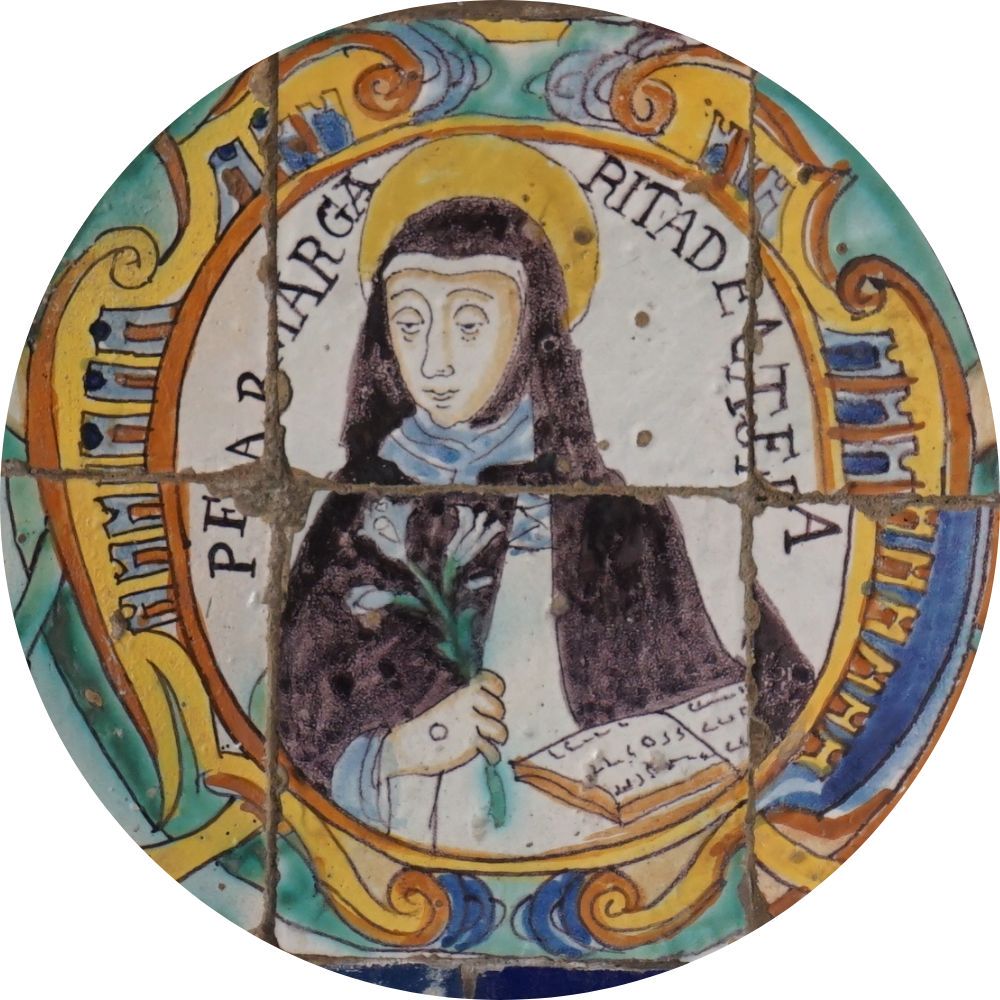St. Margaret of Castello
St. Margaret of Castello
(1287-1320)
Margaret was born in 1287 in Metoli to an aristocratic family. She was blind from birth, had a deformed spine and arm, and one leg shorter than the other. Hence she is considered the patron saint of children with disabilities. Throughout her childhood, her family hid her from the world. In 1303, her parents abandoned her and she was adopted. One of the people raising her entrusted her to the care of the Child Jesus and escorted her to the Dominican convent in Castello, where she became a tertian. She led a simple and hidden life, between her home cell and the church, devoting herself to penance and prayer and performing works of mercy. She cared for the sick, comforted the dying and visited prisoners. Despite her blindness, she saw the good in people. She died on April 13, 1320, at the age of 33. Despite the passage of time, her body has not decomposed. It is kept in St. Dominic's church in Città di Castello. Many miracles have been performed through her intercession.
Until the 19th century, her cult was limited to Italy, and it also developed in Dominican churches. It is thanks to the sisters and brothers of the Order of Preachers that her fame has gone far beyond Italy and Europe, reaching the Americas and the Far East. As early as 1609, Pope Paul IV beatified her, and in 1675 Pope Clement X extended her memorial as blessed to the entire Church. The official canonization did not take place until September 19, 2021.
In iconography, Saint Margaret is depicted in both Dominican garb and in robes specific for the period she lived in. Her attributes are the lily and the heart. The former symbolizes purity, which she especially cherished, while the heart held in her hands with the aorta open is a sign of openness to God's action. After Margaret died, the Dominicans got permission to open her heart. In it were found 3 pearls with holy figures carved on them. During her lifetime, Margaret used to say: "If only you knew what I have in my heart!
Although the lilies may correspond to this saint, it seems to me that in the case of the depiction of this Dominican saint on the ceramic tiles in the Santo Domingo Monastery in Lima there is a mistake, the lower tile here does not fit. And although there is a lily, it is clear that there are also stigmata on the hands. Hence, the person depicted with this lily and hand was a stigmatic. And we know that St. Margaret de Castello did not have any stigmata. However, another Dominican had them - Lucy of Narnia, whose image is also in this Lima decoration made of Azulejo tiles. In the case of Lucy, on the other hand, there she is shown with her eyes on a tray and with a book. It seems to me that the tile with these elements rather fits St. Margaret, and the tile with the lily - stigmata on hands - to Bl. Lucy.
Bibliography:
- Laurent M.H., La plus ancienne légende de la B. Marguerite de Città di Castello, „Achivum Fratrum Praedicatorum”, 10 (1940), pp. 109-131.
- Bonniwell W. R., The story of Margaret of Metola, New York 1952 (Italian translation: La cieca della Metola, Roma 1955).
- Ascani A., Storia di un monumento. Chiesa di S. Domenico a Città di Castello, Città di Castello 1963.
- Valentini U., B. Margherita de la Metola, Città di Castello 1988.
- Solvi D., Riscritture agiografiche. Le due «legendae» latine di Margherita da Città di Castello, „Hagiographica”, 2 (1995), issue 2, pp. 251-276.
- Lehmijoki-Gardner M., Writing religious rules as an interactive process. Dominican penitent women and the making of their regula, „Speculum”, 79 (2004), pp. 660-687.

